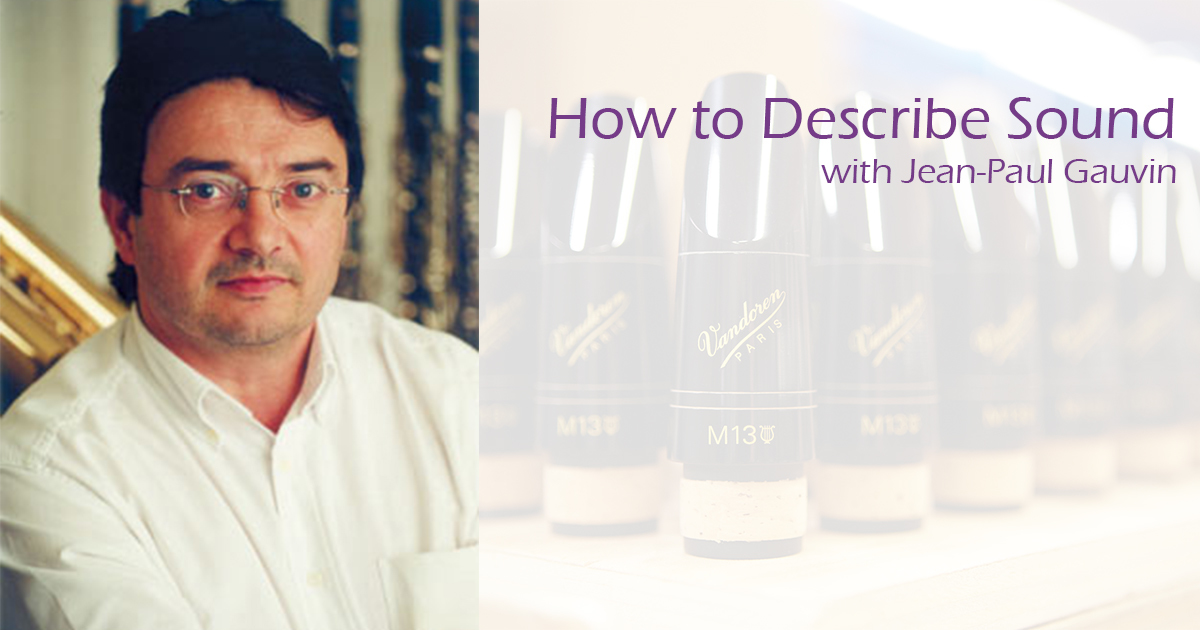How to Describe Sound
by Jean-Paul Gauvin
Date Posted: December 19, 2017

“Sound conveys the expression of the instrument, along with the temperament of the instrumentalist...What is a luminous, brilliant, warm, round, centered, compact sound, etc...? This vocabulary does not have the same meaning for everyone. It is for this reason that I am over simplifying by using the image of the sun and the moon. The V16 alto mouthpiece, for example, has a resonant sound. The image of the sun suits it perfectly; its warmth and its luminous aspect release all the energy needed to define the power and brilliance of sound. Another example is the B40 clarinet mouthpiece. The full moon, compact and dense, provides light for a soothing universe. Whether it is the sun or the moon, it is a complete and uniform circle generating a luminosity, and therefore timbre, through its rays.
What is more beautiful than a sunset reflected in the water? Sound, too, is the reflection of an instrumentalist. Why do musicians want to identify with an idol? Playing the same mouthpiece as X or Y does not mean you will produce the same sound. The reason for such a variety of models is, precisely, so that everyone can find something to suit them. It is true that the mouthpiece-plus-musician alchemy expresses a type of sound that will be proportionally more determining than the model of instrument.
Playing a classical mouthpiece and playing a jazz mouthpiece are two different ways of blowing air into the instrument. Even if certain mouthpieces are easier to handle, such as the V16 alto, an embouchure technique and phrasing is required to add something different in the playing. The jazz mouthpiece will help the musician to add a timbre to his playing, but that is all. If he does not swing, the mouthpiece cannot correct anything. On the other hand, there are jazz saxophonists who play with classical mouthpieces although what they produce does not sound “classical” in this musical context. It is necessary, in fact, to have an aesthetic sense of phrasing.
The musician expresses himself in terms of “feelings”. He will talk of a feeling for the tip opening, and too rarely about the length of the facing. If he tries a mouthpiece with a short facing, he will probably say “this mouthpiece is open” and if he tries a mouthpiece with a long facing, he will claim that “this mouthpieces closed” (for mouthpieces with the same tip opening, of course). For musicians, the notion of facility is frequently associated with the tip opening of the mouthpiece, which is only one parameter among many others.
One of the attractions of our profession is that we are able to translate every musical and technical language, thanks to contacts with musicians from all backgrounds.”